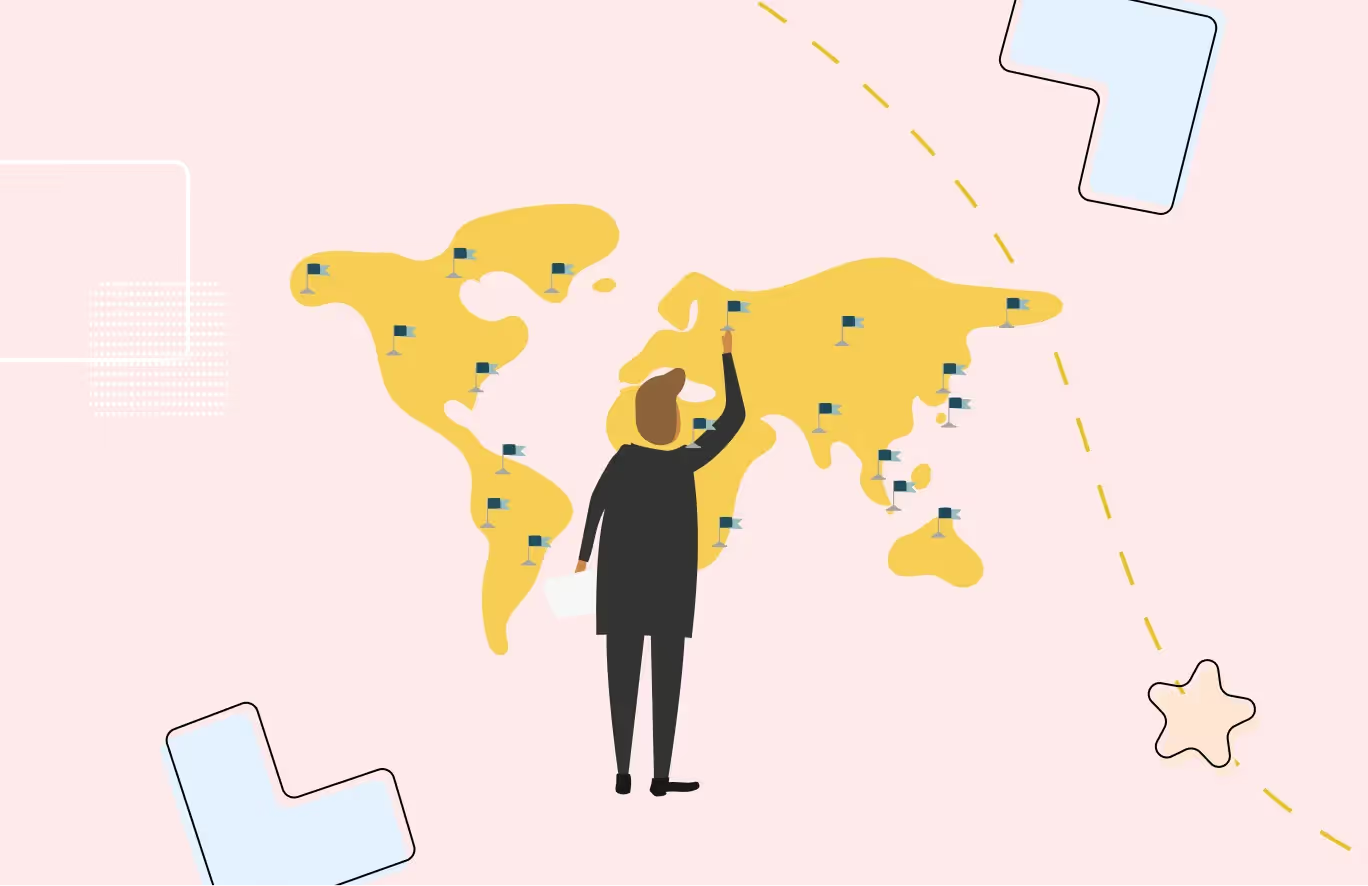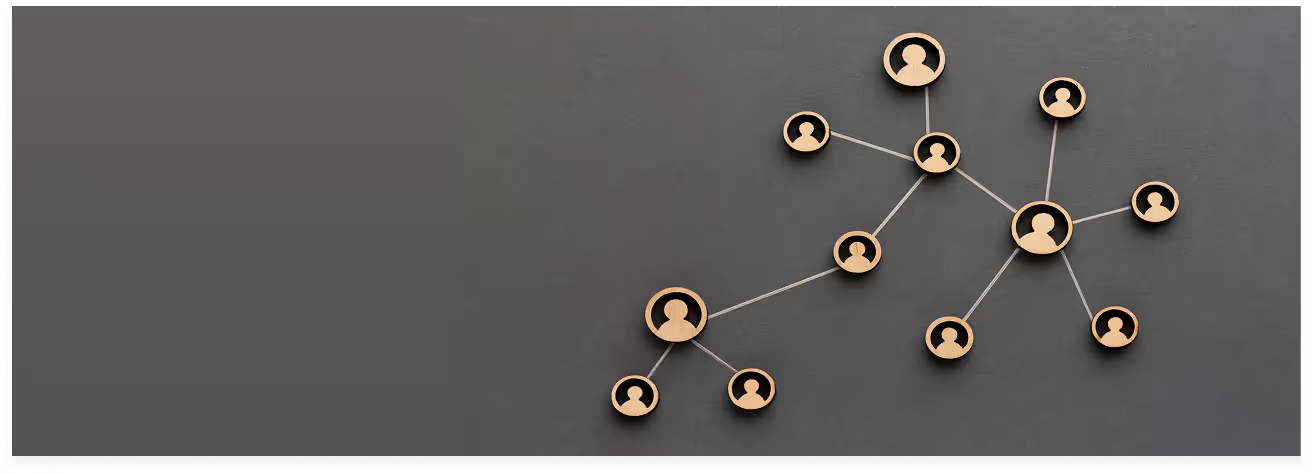Finding top-notch design talent can often be a challenging endeavor. Despite rigorous recruitment processes and substantial investments in local talent markets, securing designers who genuinely resonate with your brand's vision can still feel like a herculean task.
However, the rise of remote work has dramatically transformed the landscape of hiring. Companies now have the opportunity to tap into a global talent pool, accessing a diverse array of designers with unique skills and perspectives. This not only enriches your creative team's dynamic but can also lead to significant cost savings and innovative solutions that might not be available locally.
In this article, we'll explore 10 countries renowned for their talented pool of designers, helping you to pinpoint the best regions to find exceptional design professionals who can contribute to your projects and help set your brand apart.
Top 10 Countries to Hire the Best Designers
1. Canada

If you're having difficulty finding top design talent within the US, consider looking north to Canada to hire employees. Since the pandemic, Canada's tech workforce has been growing rapidly, even outpacing the US. According to Statista, approximately five million Canadian employees worked remotely in 2021, which is about 32% of the Canadian workforce.
Canada's friendly immigration policies and Global Talent Stream program have attracted a wealth of skilled designers from around the world. Canada is home to some of the world's top design schools and programs, such as those offered by the University of Toronto, Emily Carr University of Art and Design, and OCAD University. These institutions provide rigorous training in various design disciplines, including graphic design, user experience (UX) design, and product design.
Additionally, favorable exchange rates with the US can help reduce your labor costs. Toronto, Canada's primary tech hub, shares the same time zone as New York, facilitating seamless communication.
Average Salary: $69,047 annually
Time Zones:
- PT, UTC-7:00
- MT, UTC-6:00
- CT, UTC-5:00
- ET, UTC-4:00
- AT, UTC-3:00
Top Talent Hubs: Toronto, Montreal, Vancouver
2. Spain

Spain boasts over a robust digital talent with over 800,000 citizens possessing skills in ICT. THe country also plays host to six universities that are featured in QS Ranking’s top 250 universities for design worldwide.
Moreover, the introduction of Spain's digital nomad visa has made the country a hotspot for international remote workers, including web designers, from around the world.
Average Salary: $27,000 - 43,000 annually
Time Zones: CET, UTC+1:00
Top Talent Hubs: Barcelona, Madrid
3. Philippines

Hiring designers in the Philippines has been a popular strategy for businesses aiming to reduce costs while maintaining access to high-quality design services. In 2019, it was ranked 95th in parameters of ease of doing business and has emerged as a prime location due to its robust creative industry and high English proficiency.
Average Salary: $34,000 - $45,000 annually
Time Zones: PHT, UTC+8:00
Top Talent Hubs: Metro Manila, Cebu, Davao
4. India

Hiring remote designers in India is advantageous due to its large pool of skilled and cost-effective web developers. Known for high-quality work and competitive pricing, India stands out as a prime destination for outsourcing web design. Additionally, India is one of the fastest-growing freelancing markets, with approximately 15 million freelancers collaborating with employers from the Americas, Europe, Australia, and Asia. This extensive talent pool and global collaboration experience make India an ideal choice for companies looking to hire international contractors or employees for their design teams.
Average Salary: $18,000 - annually
Time Zones: IST, UTC+5:30
Top Talent Hubs: Bengaluru, Delhi, Mumbai
5. Mexico

As a fast-paced innovation hub for IT talent, Latin America is quickly becoming a jewel in the technology industry.
According to the Coursera Global Skills Report 2023, Mexico is the second-largest tech talent pool in the region and is rapidly developing as a global industry hub. In Mexico, you can save 50-70% compared to US rates for high-quality work. The country offers experienced designers with over five years of expertise, proficient in both Latin American and US markets.
Additionally, Mexico's flexible labor laws allow you to easily scale your team based on project needs, making it an ideal choice for remote design talent.
Average Salary: $31,466 annually
Time Zones:
- PT, UTC-7:00
- MT, UTC-6:00
- CT, UTC-5:00
Top Talent Hubs: Mexico City, Guadalajara, Monterrey
6. Romania

Romania boasts highly skilled professionals in UI/UX design, web design, and graphic design. The country's tech sector is rapidly growing, supported by a strong educational system. Romania's technology talent pool is young, dynamic, and diverse, with women making up 21% of the workforce, surpassing many other European centers.
Romanian designers are proficient in English, ensuring effective communication with international clients. The cost-effectiveness of hiring Romanian designers, combined with their technical expertise, makes Romania an attractive destination for remote design services.
Average Salary: $23,000 annually
Time Zones: EEST (Eastern European Summer Time) UTC/GMT +3 hours
Top Talent Hubs: Bucharest and Cluj-Napoca
7. Poland

Poland offers top-notch talent in UI/UX design, web design, and mobile app design. With a robust education system and a significant number of tech specialists, Poland provides highly skilled professionals who are proficient in English.
Warsaw and Kraków are notable talent hubs, housing many tech companies and design agencies. The convenient time zone for European clients makes Poland an ideal location for companies seeking quality design services at competitive rates.
Average Salary: $24,000 annually
Time Zones: CET: UTC+1
Top Talent Hubs: Warsaw and Kraków
8. Ukraine

Ukraine boasts over 200,000 IT professionals, many of whom specialize in design. The country has established itself as a hub for UI/UX design, product design, and illustration.
Ukrainian designers are known for delivering high-quality work at lower costs than designers in Western Europe.
Kyiv, the capital, and Lviv are prominent talent hubs with strong technical skills and educational systems contributing to Ukraine's reputation for excellence in design.
Average Salary: $35000 per year
Time Zones: EET: UTC+
Top Talent Hubs: Kyiv and Lviv
9. Argentina

Argentina is renowned for its high-quality design work in graphic design, UI/UX design, and web design.
According to UXArgentina, 77% of Argentinian UX designers have some form of higher education, with 47% holding a college degree. In Argentina, a college degree, or “Licenciatura,” is equivalent to a Master’s Degree, compared to only 17% of American UX designers who have a Master’s Degree.
This robust educational foundation contributes to a highly skilled and creative design workforce. Additionally, Argentina's time zone compatibility with North America makes it an attractive and convenient option for US-based companies seeking top-tier design talent at competitive rates.
Average Salary: $44,000 annually
Time Zones: UTC−03:00
Top Talent Hubs: Buenos Aires, Cordoba, Mendoza, and Rosario
10. Brazil

Brazil's creative industry is renowned for its talent in graphic design, UI/UX design, and web design. The country’s designers bring a unique flair to their work, influenced by Brazil’s rich cultural heritage. Competitive pricing and a growing tech sector make Brazil an attractive destination for hiring remote designers. The country also benefits from a large number of design and tech graduates each year, fueling the talent pool.
Average Salary: $14,468 annually
Time Zones:
- PT, UTC-7:00
- MT, UTC-6:00
- CT, UTC-5:00
Top Talent Hubs: São Paulo and Rio de Janeiro
Hire Remote Designers Across the Globe with Gloroots
Hiring remote designers brings its own set of challenges, including navigating international labor laws, managing global payroll complexities, and ensuring effective communication across different time zones. Fortunately, partnering with an Employer of Record like Gloroots can streamline these processes, allowing you to focus on leveraging top design talent while maintaining global compliance.
Here's why Gloroots is your ideal partner for managing international workforces:
Global Reach and Expertise: Gloroots' extensive international network and deep market knowledge enable you to employ global talent legally and effectively.
Flexible and Scalable: Whether you are a burgeoning startup or an established large corporation, Gloroots offers tailored Employer of Record services to meet your diverse needs.
Comprehensive Services: From onboarding and global payroll to compliance and benefits management, Gloroots handles all employment-related responsibilities, ensuring that your operations run smoothly.
Reliability: Built on a foundation of trust and transparency, Gloroots guarantees timely payroll services and expert navigation through complex international laws.
Automated Payroll: With features like one-click payroll execution, customizable bonuses, and intuitive invoice management, Gloroots simplifies the payroll process.
Exceptional Support: Receive expert guidance and assistance across various time zones, ensuring a seamless experience when managing your global design team.
Streamline your global workforce management with Gloroots and focus on your core operations. Book a demo here.
FAQ
Why hire remote designers?
Hiring remote designers offers several advantages, including access to a global talent pool, cost savings, and increased flexibility. Remote designers can bring diverse perspectives and innovative ideas from different cultural backgrounds. Additionally, remote work can lead to higher productivity and job satisfaction, as designers can work in environments that best suit their needs. This approach also allows companies to scale their design teams quickly and efficiently, without the constraints of geographic location.
What are the types of remote designers?
There are various types of remote designers, each specializing in different areas:
- Graphic Designers: Create visual content like logos and advertisements.
- Web Designers: Design the layout and appearance of websites.
- UI/UX Designers: Focus on user interfaces and optimizing user experiences.
- Product Designers: Work on the functionality and aesthetics of products.
- Motion Designers: Create animations and visual effects.
- Illustrators: Produce original artwork for various media.
- Brand Designers: Develop and maintain visual brand identities.
- Interaction Designers: Ensure intuitive user interactions with products.
- Service Designers: Improve the quality of services and customer interactions.
- Interior Designers: Offer virtual design consultations for spaces.
How do I determine the best countries to hire remote designer talent for my specific business needs?
To determine the best countries for hiring remote designers, evaluate the following factors: skill availability, cost efficiency, English proficiency, time zone compatibility, cultural compatibility, and legal considerations.
Research countries with strong design talent pools and compare salaries and costs to find cost-effective options. Use platforms like Upwork and Toptal to review portfolios and feedback. Ensure time zones align for effective collaboration and check legal requirements for international hiring.
How can businesses with limited resources find remote designers?
Businesses with limited resources can find remote designers by leveraging freelance platforms like Upwork and Fiverr, posting on remote job boards such as Remote.co, and networking on LinkedIn and design communities like Dribbble.
Utilizing an Employer of Record (EOR) service can streamline the hiring process, handle compliance, and manage payroll, making it easier to onboard remote designers efficiently.

.webp)




























.webp)
























.webp)


.webp)


.webp)












